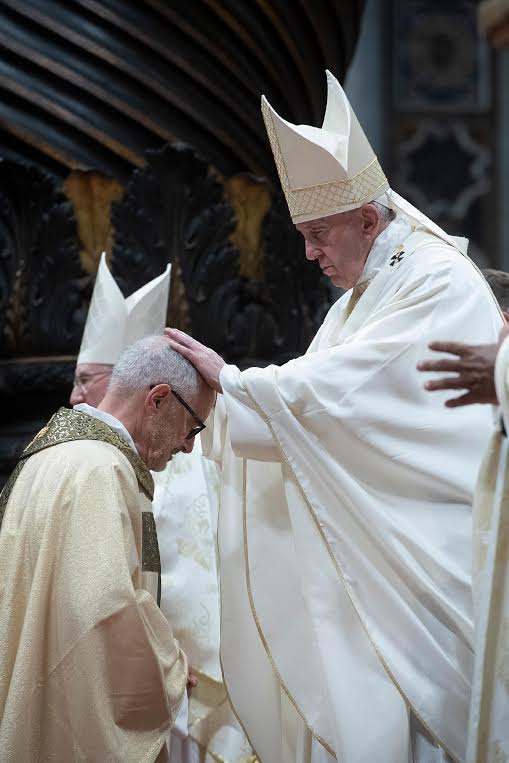Son of migrants, grandchildren of victims of Nazism, Cardinal Michael Czerny, Under-Secretary of the “Migrants and Refugees” Section of the Dicastery for Integral Human Development, recalls his family’s history in an interview with “Vatican News.”
The 73-year-old Jesuit retraces the journey of his parents in Moravia, in what was then Czechoslovakia, before emigrating to Canada in 1948: “My mother, Winifred Hayek Czerny, suffered prison and concentration camps during 20 months . . . She was also condemned to work on a farm. Born Catholic of Catholic parents, her grandparents were Jews; she was classified as Jewish by the Nazi authorities that governed the Protectorate of Bohemia and Moravia from March 1939.”
For the Cardinal, she had “the chance to survive the monstrous insanities of the regime.” She returned to the Terezin camp in April 1995, where she wrote “I survived” in the Visitors’ Book. Winifred Hayek Czerny became a sculptress, art in which she “reversed the evil” that reduced human beings to dust: she sculpted with dust and clay the forms of numerous human” beings who died in the camp.
The Cardinal’s father, Egon Czerny, refused to be separated from his condemned wife. He escaped from the concentration camp but was then sent to a forced labor camp at Postoloprty.
His Grandmother’s Art
The Jesuit Cardinal also remembered his grandmother: as an artist, she painted “the Flight into Egypt” on glass, an image he used for his card when he was created Cardinal on October 5, 2019.
Born Catholic of Jewish parents in 1893, Anna Low Hayek was deported in 1942-1943 to the Terezin camp with her husband Hans and her two sons, Karl Robert and Georg. She died in Auschwitz a few weeks after the end of the War.
A History of Migrants
Finally, Cardinal Czerny recounted the adventures of his parents to find a “sponsor” to be able to immigrate to Canada in 1948, to escape from the Communist regime. “First a relative was in agreement, but then he retracted. Then a businessman accepted to hire my father, but he changed his mind when his factory burnt down.”
Finally, it was a studies friend who agreed. ”He himself had emigrated to Canada a few years earlier with his wife and young son. The risk of sponsoring us included covering our needs during a year if my father didn’t find work. Despite everything, his family helped us to enter the country, welcomed us and accompanied us, to adapt linguistically, culturally, etc.
Coat of Arms and Pectoral Cross
It’s a souvenir of his family but also a sign of his engagement in the Dicastery that the Under-Secretary chose as his Cardinal’s Coat of Arms: a boat transporting a family of four refugees.
Likewise, his pectoral cross was made from the wood of a boat of migrants that tried to cross the Mediterranean. A material recalling also “the wood of the cross where Jesus was crucified,” he said.



